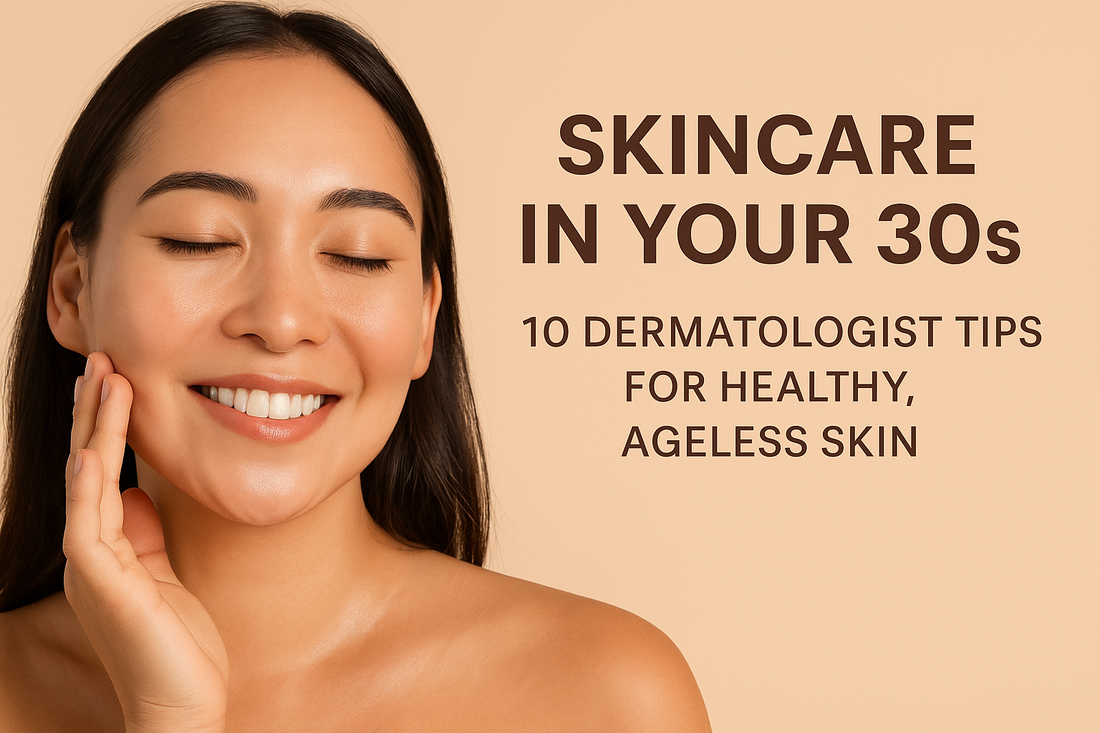
Skincare for Ages 28–35: The Expert Routine You Didn’t Know You Needed
Share
As you enter your late 20s to mid-30s, your skin starts to shift. Collagen production slows down, your barrier becomes more reactive, and lifestyle habits catch up. If you're 27–35 years old, now is the perfect time to upgrade your skincare routine—not with hype, but with clinically-backed strategy.
Here are 10 dermatologist-informed, brand-approved tips that go beyond the basics to help your skin age gracefully, stay hydrated, and maintain its glow.
1. Invest in Anti-Aging Ingredients Early
Start introducing powerhouse actives like retinol, peptides, and niacinamide into your routine.
- Retinol encourages collagen production and fades early fine lines.
- Niacinamide (4–10%) smoothens skin texture and minimizes pores.
- Peptides support firmness and healing—look for copper peptides or growth factors.
- For sensitive skin? Try Bakuchiol, a gentler, plant-based retinol alternative.
Pro tip: Use these at night and pair them with SPF during the day.
2. Upgrade Your Moisturizer to Fit Your Skin's Needs
By 30, lightweight lotions may not cut it. You need barrier-supportive, hydrating moisturizers.
- Look for ceramides + fatty acids + cholesterol—this combo mimics your skin’s natural lipids.
- Hyaluronic acid works best on damp skin. Use a mist before applying.
- Seal in hydration with light oils like squalane—great for both oily and dry skin.
Moisture loss is real. A richer texture doesn't mean breakouts—it means protection.
3. Never Skip Sunscreen—Even Indoors
Sunscreen is still your #1 anti-aging product. And yes, it matters indoors and during cloudy days.
- Use a broad-spectrum SPF 30–50, especially if you use actives like acids or retinol.
- Mineral SPF (zinc or titanium dioxide) is gentler on sensitive skin.
- Reapply every 2 hours, especially if you're exposed to screens—blue light contributes to pigmentation.
On Shopee? Look for SPF with antioxidant or blue light–fighting ingredients.
4. Exfoliate—But Not Every Day
Chemical exfoliation helps maintain glow, but overdoing it causes inflammation and premature aging.
- AHAs (glycolic, lactic acid): Exfoliate the skin surface—great for dullness and texture.
- BHAs (salicylic acid): Penetrate deeper—ideal for oily, acne-prone skin.
- Exfoliate 1–2 times per week and always follow up with barrier repair serums or moisturizers.
Avoid combining exfoliants and retinoids in the same routine.
5. Eye Cream Isn’t Extra—It’s Essential
Your eye area has the thinnest skin on your face, and it's where aging shows first.
- Use ingredients like caffeine, peptides, or vitamin K to target dark circles and puffiness.
- Massage gently using your ring finger to avoid tugging.
- For depuffing, store your eye cream with a metal tip applicator in the fridge.
Consistency is key—start before the wrinkles set in.

6. Use Antioxidants Beyond Just Vitamin C
While Vitamin C is popular, antioxidants like ferulic acid, resveratrol, and EGCG (green tea extract) are also powerful in protecting skin from free radicals and environmental stress.
- Apply them in the morning, under sunscreen, to maximize protection.
- Antioxidants help prevent uneven tone, dullness, and premature wrinkles.
Look for stabilized formulas and air-tight packaging.
7. Don’t Ignore Your Neck and Chest
Aging doesn’t stop at the jawline.
- Apply serums, moisturizers, and sunscreen on your décolletage daily.
- These areas are often exposed to sun and friction (e.g., from collars), leading to early lines.
Treat it like your face—it needs love too.
8. Try Skin Cycling to Avoid Irritation
Skin cycling is a smart, dermatologist-endorsed routine that gives your skin time to recover:
- Night 1: Exfoliate
- Night 2: Use retinoids
- Night 3 & 4: Barrier repair with hydrating serums and creams
Repeat weekly. It minimizes irritation while maximizing long-term results.
9. Use a Humidifier at Night
Dry air = dehydrated skin.
- If you sleep in an air-conditioned room or live in a dry climate, a cool mist humidifier can maintain optimal hydration overnight.
- Great for those with dry, flaky, or compromised skin.
More water in the air = more water in your skin.
10. Prioritize the Skin’s Microbiome
Your skin has a natural ecosystem of bacteria that protect it. Disruption = breakouts, redness, and sensitivity.
- Use products with prebiotics, probiotics, or fermented ingredients.
- Avoid over-cleansing, over-exfoliating, and stripping alcohols.
A healthy skin microbiome = stronger barrier + less inflammation.
Shopping for Skincare?
When browsing skincare products, look for:
✔️ “For 30s” or “Anti-aging” in the title
✔️ Retinol or Niacinamide in the ingredients list
✔️ SPF 30+ with blue light defense
✔️ Peptide-rich moisturizers or microbiome-safe cleansers
As you transition into your 30s, your skincare goals should shift from simply reacting to issues, to proactively preserving and enhancing your skin’s long-term health. You don’t need a 10-step routine filled with trendy products—instead, focus on building a consistent, purposeful regimen tailored to your changing skin needs. Think prevention over correction, hydration over harsh treatments, and ingredients that support your skin barrier rather than strip it.
With the right combination of clinically backed actives, sun protection, and barrier support, you can maintain a radiant, youthful glow while also protecting your skin from premature aging, dullness, and environmental damage. Your 30s are not about chasing perfection—they’re about protecting the foundation for the years ahead.
